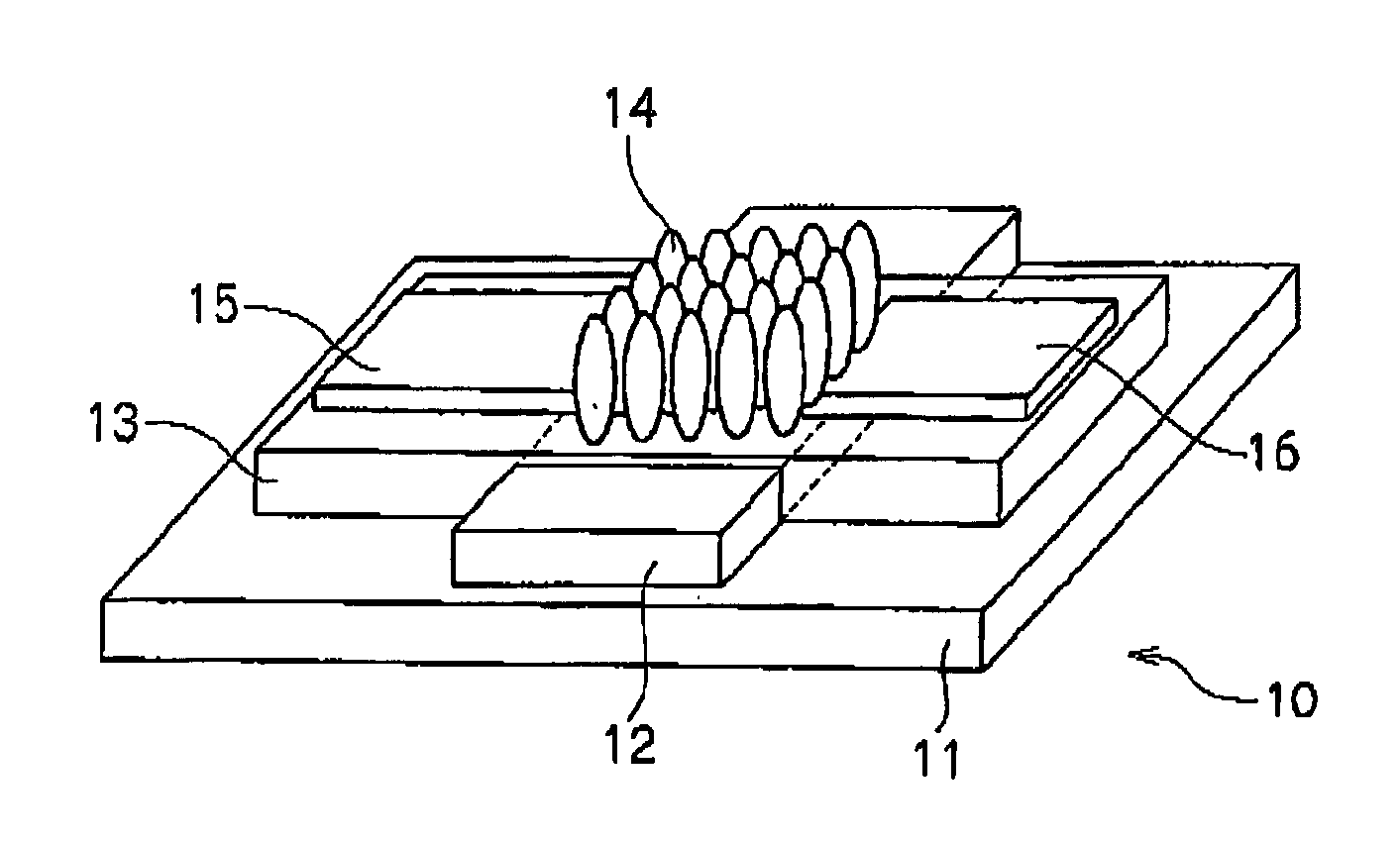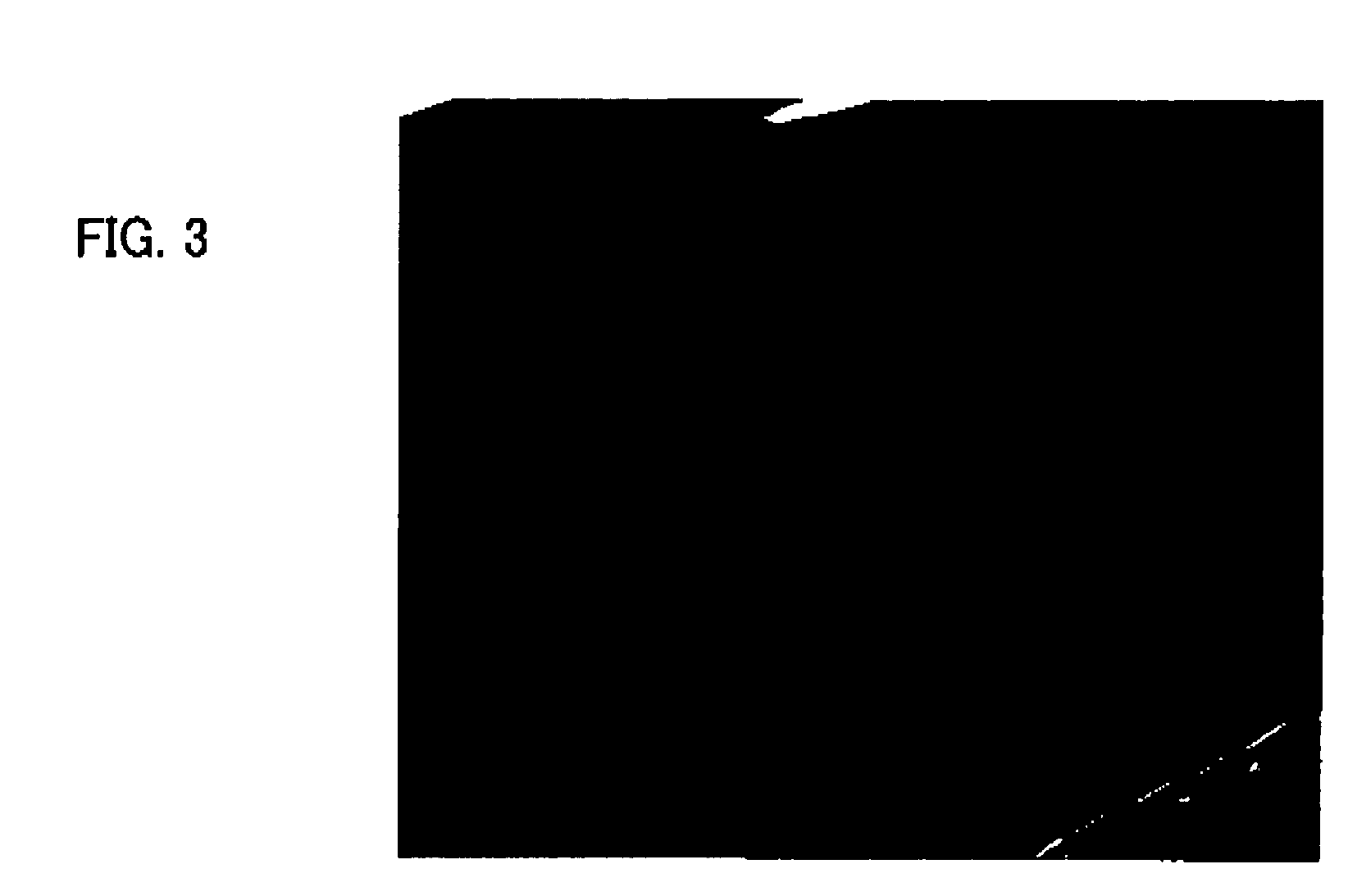Organic semiconductor structure, manufacturing method of the same, and organic semiconductor device
- Summary
- Abstract
- Description
- Claims
- Application Information
AI Technical Summary
Benefits of technology
Problems solved by technology
Method used
Image
Examples
example 1
(Preparation of Organic Semiconductor Device)
[0098] By using a phenyl naphthalene derivative (2-(4′-pentylphenyl)-6-methoxynaphthalene. Hereinafter, this may be abbreviated as 5-PNP-O1.), which is the compound shown in the above chemical formula 47, as the organic semiconductor material, the organic semiconductor device comprising substrate / gate electrode / gate-insulating layer (also serving as an liquid crystal alignment layer) / source-drain electrodes / organic semiconductor layer ( / protective layer) was prepared.
A glass substrate (thickness: 1.1 mm, Corning 1737) subjected to ultrasonic cleanings by using a neutral detergent, pure water, acetone and IPA in this order was used.
[0099] The gate electrode was formed on the substrate by resistance heating depositing a strap-shaped pattern (electrode width, 100 μm, between electrodes: 5 mm) of Au (thickness: 300 nm) via a metal mask, A similar electrode pattern can be formed by patterning an ITO electrode by using a wet process.
[0100...
example 2
[0106] As the liquid crystalline organic semiconductor material, 2-(4′-octylphenyl)-6-butyloxynaphthalene (abbreviated as 8-PNP-O4) shown in the above chemical formula 40 was used. Then, a sandwich cell, which was prepared by sticking two substrates provided with patterned ITO electrodes (electrode size: 4 mm×4 mm) together with 9 μm of cell gap, was heated to 150° C. In this sandwich cell, the liquid crystalline organic semiconductor material 8-PNP-O4 in the isotropic phase state was injected by the capillary phenomenon. Then, the liquid crystalline organic semiconductor material was supercooled, from the isotropic state, to around 115° C. at a speed of 1° C. / min. When grain formation of the smectic liquid crystal phase has begun partially, the temperature was raised to 140° C. at a speed of 20° C. / min, and by maintaining this temperature until the material is in the smectic liquid crystal state, the organic semiconductor layer of Example 2 was formed. In this organic semiconductor...
example 3
[0107] As the liquid crystalline organic semiconductor material, 2-(4′-octyloxyphenyl)-6-butyloxybenzothiazole (abbreviated as 80-PBT-O4) shown in the above chemical formula 48 was used. Then, a sandwich cell was prepared by sticking two substrates, provided with patterned ITO electrodes, together with 9 μm of cell gap. After that, this sandwich cell was heated to 150° C. In this cell, the liquid crystalline organic semiconductor material 80-PBT-O4 in the isotropic phase state was injected by the capillary phenomenon. Then, the liquid crystalline organic semiconductor material was supercooled, from the isotropic state, to around 100° C. at a speed of 1° C. / min. When grain formation of the smectic liquid crystal phase has begun partially, the temperature was raised to 103° C. at a speed of 20° C. / min, and by maintaining this temperature, the organic semiconductor layer of Example 3 was formed. This material turned into the nematic liquid crystal state during the supercooling process,...
PUM
 Login to View More
Login to View More Abstract
Description
Claims
Application Information
 Login to View More
Login to View More - R&D
- Intellectual Property
- Life Sciences
- Materials
- Tech Scout
- Unparalleled Data Quality
- Higher Quality Content
- 60% Fewer Hallucinations
Browse by: Latest US Patents, China's latest patents, Technical Efficacy Thesaurus, Application Domain, Technology Topic, Popular Technical Reports.
© 2025 PatSnap. All rights reserved.Legal|Privacy policy|Modern Slavery Act Transparency Statement|Sitemap|About US| Contact US: help@patsnap.com



